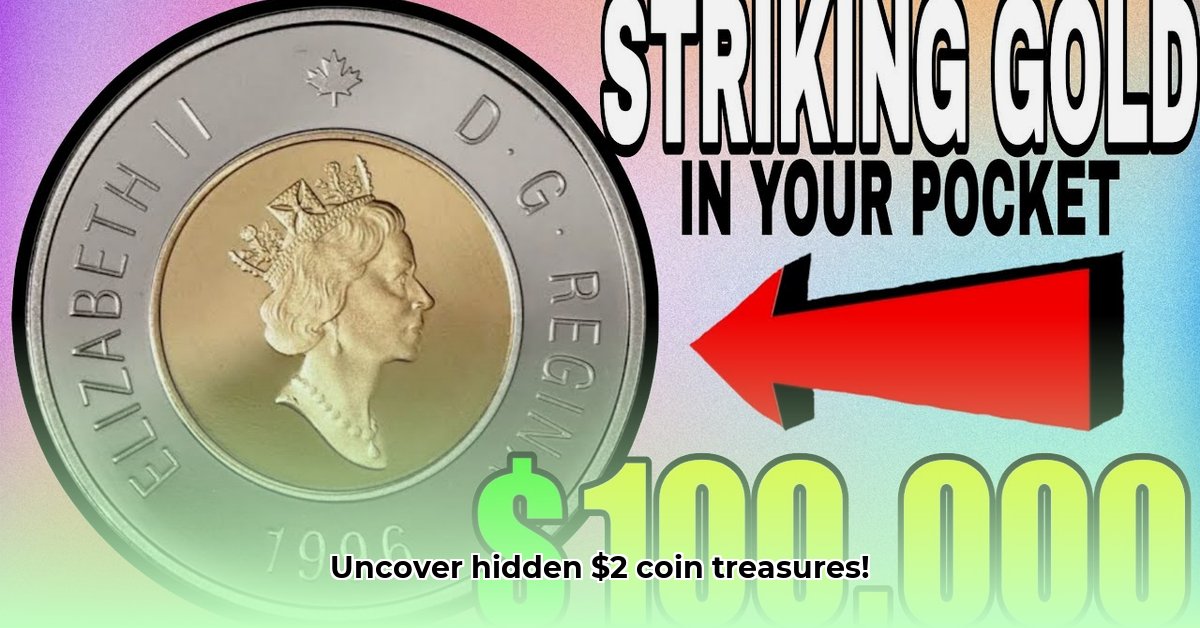
The 1996 Canadian two-dollar coin, affectionately known as the "toonie," holds a unique place in numismatics due to an unexpected twist in its production: the use of German-made planchets (coin blanks). This guide provides collectors and investors with the knowledge to identify, grade, and assess the value of these intriguing coins, particularly the rarer "Cigar" and "Horn" varieties. For more on coin values, see this helpful resource on rare coin values.
Production and History: A German Twist
In 1996, the Royal Canadian Mint faced production challenges, leading to the incorporation of approximately 10 million planchets sourced from a German manufacturer, Deutsche Nickel. This decision resulted in subtle yet significant differences between coins made with German planchets and those made with Canadian planchets. These differences, though often subtle, are key to understanding the potential value of these coins. While the exact number of German planchet toonies remains unknown, their rarity among the approximately 60 million 1996 toonies minted contributes to their collector value.
Identifying Key Varieties: Spotting the Differences
Identifying a 1996 toonie made with a German planchet requires careful observation. Collectors have reported differences in surface texture and finish. While definitive visual characteristics are still under research, coins made from German planchets often display a more matte finish than those manufactured in Canada. The differences are subtle, making high-resolution images crucial for comparison.
Beyond the general German planchet distinction, anecdotal evidence suggests the existence of rarer variations unofficially termed "Cigar" and "Horn" varieties. The characteristics distinguishing these varieties require further research and detailed analysis for confirmation. However, careful examination of the coin’s surface, particularly the outer ring, is paramount. Any unusual markings or textures should be documented with high-quality photos for potential future analysis.
Grading and Condition: Assessing Collectible Worth
A coin's condition is paramount in determining its value. Professional grading services, such as the Professional Coin Grading Service (PCGS) and the Numismatic Guaranty Corporation (NGC), employ standardized scales (like MS 65, MS 70 for Mint State) to objectively assess a coin's condition. Higher grades indicate better preservation, translating to significantly higher value. For example, an uncirculated (MS) coin, free from wear and blemishes, is far more valuable than a coin showing significant circulation wear.
Determining Value: Market Factors and Appraisal
Precise pricing for 1996 Canadian $2 coins, especially those with German planchets or the rarer "Cigar" and "Horn" varieties, is challenging. The market value fluctuates based on several factors:
- Rarity: The exact number of German planchet coins in circulation is not definitively known, increasing their scarcity and potential value.
- Condition: As with all collectible coins, the better the condition (grading), the higher the value. A near-perfect coin in mint state commands a significantly higher price.
- Market Demand: Collector interest and current market trends heavily influence price.
To obtain an accurate valuation, it is strongly recommended to consult reputable numismatic dealers or utilize the services of professional grading companies like PCGS or NGC. Online pricing should be viewed with caution, as it can be unreliable and inaccurate.
Investing in 1996 $2 Coins: A Risk Assessment
Investing in rare coins holds potential rewards but involves inherent risks. Consider the following:
| Factor | Risk Level | Mitigation Strategies |
|---|---|---|
| Counterfeit Coins | High | Only purchase from reputable dealers with established track records. Verify authenticity through professional grading. |
| Market Volatility | Medium | Diversify your coin portfolio. Monitor market trends using reliable data sources. |
| Information Asymmetry | Medium | Conduct thorough research using multiple reputable sources. Consult with experienced numismatists. |
| Lack of Granular Price Data | High | Use multiple sources for pricing information, recognizing the lack of precise data for rare variations. |
Remember, thorough research and professional guidance are essential for successful numismatic investment.
Conclusion: Research and Careful Assessment are Key
The 1996 Canadian $2 coin offers a fascinating blend of history, manufacturing quirks, and numismatic intrigue. The German planchet story adds an element of rarity to this already collectible coin. However, accurate assessment of value requires careful examination, professional grading, and consultation with experienced numismatists. Always prioritize authentication to avoid counterfeit coins and carefully weigh the risks before investing. Continued learning and research are the best tools for navigating this field successfully.